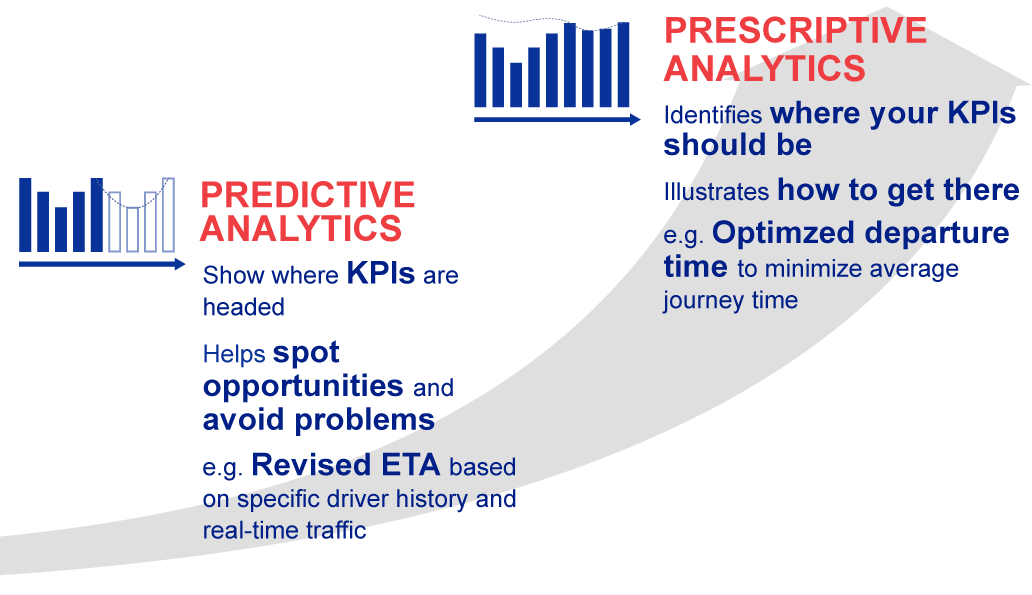What if we could tell you that your supply chain logistics data has an enormous amount of untapped potential waiting to be explored?
Many companies are already collecting data from enterprise systems, telematics devices, sensors, and real-time data feeds, such as weather and traffic. Despite this, due to the varied formats and the vast quantity of data, companies experience challenges integrating real-time streaming data and historical data in order to make sense of and use the data effectively.
As a result, companies need a solution that can integrate multiple forms of data as well as apply analytics to transform the data into business intelligence.
This is possible with advanced predictive and prescriptive analytics solutions.
But, what are predictive and prescriptive analytics? And are they right for your company?
Advanced analytics solutions use historical and real-time data to not only gain a comprehensive view of data, but to also gain the ability to make sense of complex, large volumes of data in order to move from a looking-back perspective to a progressive approach.
Predictive analytics learn from historical data to provide insight into future outcomes and includes ETA and risk assessment scenarios.
Prescriptive analytics offers suggestions and insights into the outcomes of different actions using trends and patterns as reference. It yields uses cases that highlights best practices and operational intelligence.
With both, modeling and machine learning strategies are used to discover trends and patterns to predict outcomes. They use algorithms that become smarter and more accurate as more data is collected. Predictive and prescriptive analytics have the power to optimize business processes, reduce operational costs and risks, identify new opportunities, and mitigate problems before they occur.
 For supply chain logistics companies, advanced analytics provides operational intelligence in order to:
For supply chain logistics companies, advanced analytics provides operational intelligence in order to:
- PLAN smarter with accurate estimated time of arrival (ETA) information based on historical shipment, by route, by carrier, rest stops for trucks, driving slowly, congestion, etc.
- IDENTIFY high-risk locations
- CLASSIFY carriers by timeliness and quality of deliveries
- REDUCE loss due to damaged or stolen goods
- OPTIMIZE delivery times
With advanced analytics, you will be able to forecast future outcomes, prevent operational disruptions, and improve supply chain performance.
